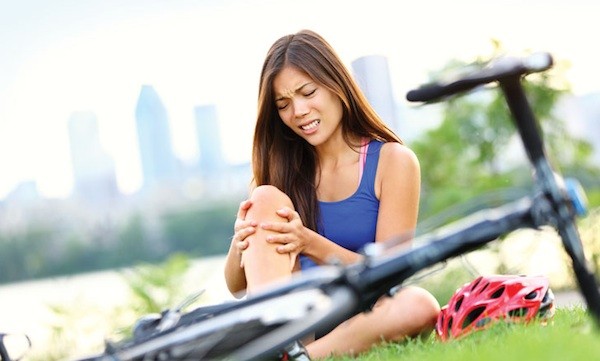 The more that you ride, the more likely common cycling injuries are going to happen to you. It’s not really an if, but rather a when. With proper preventative maintenance, such as stretching and strengthening as well as the knowledge of what to do after you have an injury, you’ll be out of commission for a shorter period of time.
The more that you ride, the more likely common cycling injuries are going to happen to you. It’s not really an if, but rather a when. With proper preventative maintenance, such as stretching and strengthening as well as the knowledge of what to do after you have an injury, you’ll be out of commission for a shorter period of time.
As with anything, your specific injury could require further treatment but having an idea of preventative measures and some simple fixes will give you a good idea on how to take care of yourself. Seek expert care if you are unsure about anything. Problems are much easier to deal with the sooner they are confronted so don’t wait to get something even minor looked into.
Knee Pain
Riding a bike includes a lot of repetitive motion so anything that is a little bit off can have a big impact on your body after a few thousand revolutions. Your knees in particular take more of a beating than anything else on the body because of the large range of motion combined with a lot of force being placed through the joint. Knee pain can develop in any number of areas around the knee for a variety of reasons.
Causes
The first big cause of knee pain is a poor position on the bike. A saddle that is too high or too low will place an uneven load through the knee joint and the muscles and tendons surrounding it. Knee pain on the front or top of the knee often is the result of a saddle that is too low and/or too far forward. Pain in the back of the knee is often the result of a saddle to high and/or too far back. Cleat position can also have an impact on how your knees track also contributing to knee issues.
A second cause of knee pain is riding to long and too hard before your tendons and muscles are ready for it. This typically occurs early in the season after a long period off the bike. Your heart and lungs may be able to push it already but the supporting muscles and tendons around your knee need time to get used to riding longer again. A lot of climbing and specifically pushing large gears can magnify this problem.
Solutions
The best way to deal with knee pain is to prevent it in the first place and if you do experience some sort of knee pain, it will hopefully be less severe. Make sure your fit on the bike is dialed. If you don’t have the know-how of where you should be positioned on the bike, seek out someone who does. Even a ball-park estimate is better than nothing and if you’re super diligent, finding a fit specialist who uses things like lasers and other exact measuring devices can give you a fit that you know is right.
To combat issues that you may have from riding too much too quick, increase your mileage gradually, no more than a 10% increase per week. And if you’re climbing, make sure you spin instead of pushing large gears. Stretching in the early season as well as throughout can also help prevent injuries.
If and when you do have a knee injury, stop riding and get it taken care of straight away. Small injuries can quickly become a major issue that can stop you from riding far longer than you want. Icing the problem area as well as taking anti-inflammatory medication along with eating anti-inflammatory foods can help reduce inflammation. Never take medication to be able to ride. If your knee is sore you want to feel it so you know to stop riding or to take it easy. If you can’t feel it, you’re just going to continue riding hard doing even more damage.
Rest is going to be the biggest thing that heals your knee quickly. While you rest, figure out the root of what caused the problem in the first place because if you just get straight back on the bike the problem is probably going to come back. Everything happens for a reason so make sure you deal with it before it becomes an ongoing issue.
Back Pain
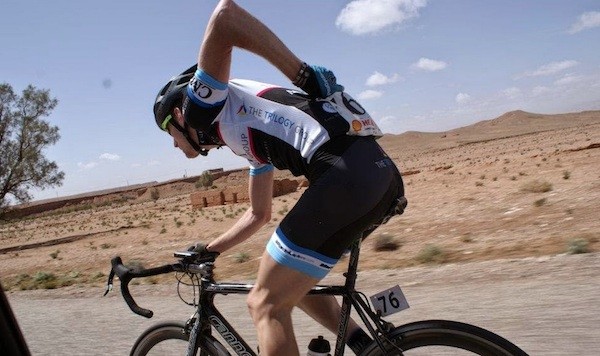
Another common injury in cycling is back pain due to the bent-over nature of the cycling position. Back pain can range from mild discomfort on a longer ride to ride stopping pain that needs to be dealt with immediately. Back pain can be muscular but it can also be a larger issue with the spine itself, such as a pinched nerve, which can require more than just self-treatment.
Causes
Back pain usually results from one of two issues. The first is poor core-strength. This includes the muscles around the spine and up the back as well as your abdominal muscles. The second, lesser known cause of back pain is hamstring tightness. Both of these can be exaggerated also by your handlebars being positioned to low and/or too far forward.
Solutions
To prevent back problems, first make sure you have a good fit on the bike. Then focus on strengthening your core with back and abdominal exercises. An exercise ball can be a great tool that helps hit the right muscles. With strengthening, stretching is also very important. Cyclists notoriously have tight hamstrings. Everything is connected so tight muscles in the back of your legs pull all the way up through your back. Your back may be sore but the cause of it may be difficult to pinpoint. To take care of back pain once you have it, do some gentle stretches, specifically of your hamstrings. A hot shower or hot tub can also help relax your back muscles giving you relief.
Road Rash
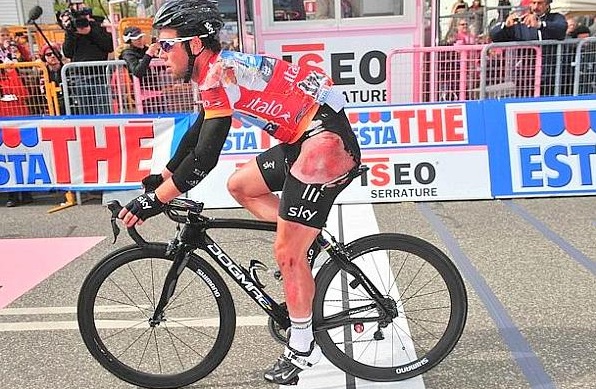
Road rash is an unfortunate side-effect of crashing. Fortunately, standard road rash isn’t deep into the muscle and can still be ridden with provided you take care of it. If you don’t know what you’re doing or if your road rash is more than just minor, seek expert help. Mishandling road rash can result in infection as well as delayed healing time.
Cleaning
The first thing to do with road rash is to clean it as soon as you can. The longer you wait to clean it, the more it is going to hurt. After a crash, adrenaline pumps through your body resulting in you feeling less pain. You want to try and clean the wound before that wears off.
As long as the wounds aren’t too deep, clean the area starting with water and a clean cloth or sponge. You’re going to have to be a bit harsh on it to make sure all the dirt gets out. Showering will hurt a lot, and when I say a lot, I mean a lot, but using a light soap with a clean cloth can help get a lot of potential debris out. If you don’t shower, still scrub to get everything out.
Sterilizing
After getting the bigger stuff out, using an antiseptic such as hydrogen peroxide will ensure that the wound is clean. The use of this is a bit debated as hydrogen peroxide not only kills all the bad stuff in there but also your cells as well potentially delaying the healing process. Regardless of your approach, make sure the wound is thoroughly cleaned.
Healing
After you’re sure that everything is cleaned, applying an anti-biotic healing cream can help prevent infection along with help healing. Once a thin layer is applied, a non-stick (this is important as you don’t want the bandages healing in the wound as when you take the bandage off it will take the skin with it) or a thin film such as Tegaderm will help keep the wound protected and cleaned.
Cycling is a sport that comes with an increased likelihood of getting injured. Just because of this risk doesn’t mean we’re just going to give it up. Knowing how to prevent injuries as well as dealing with them once you have them is critical. Also, as much as you need to take care of yourself physically, you also need to take care of yourself mentally.
The first part is that you’ll be back riding before you know it and some time off can be good. Use this time to do the other things you tend to neglect when you’re riding a lot. Secondly, if you’ve suffered an injury from a crash, you are probably going to be a bit timid getting back on the bike. There’s no problem taking it easy when you first start back. You’ll regain your comfort and before you know it you’ll be back to your riding self. Take the preventive measures to avoid injuries and when they do occur, approach them with a calculated deliberate approach and you’ll be back riding before you know it.
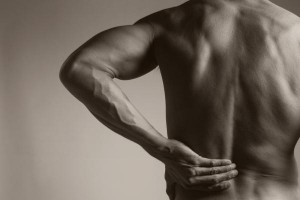 Many people do not like to spend money on one of the most important areas of cycling… Bike fit. A proper bike fit will save you from serious amounts of pain and frustration along with delivering more power to the pedals and a more comfortable ride. It is all too common for a cyclist to be too stretched out on a bike or too low.
Many people do not like to spend money on one of the most important areas of cycling… Bike fit. A proper bike fit will save you from serious amounts of pain and frustration along with delivering more power to the pedals and a more comfortable ride. It is all too common for a cyclist to be too stretched out on a bike or too low.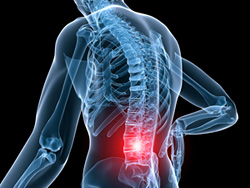 Even riding style can cause lower back pain. If you like to push a large gear then that can put unnecessary strain on your back, especially while climbing up a hill.
Even riding style can cause lower back pain. If you like to push a large gear then that can put unnecessary strain on your back, especially while climbing up a hill.